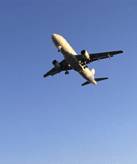
FRIDAY, Dec. 4 (HealthDay News) — As corporate and private jets take off and land at small airports across the country, their engine exhaust fills the air with small particles of combustion that could affect the health of people living nearby, suggests a new study by California researchers.
Though air pollution has long been recognized as a problem near major airports, far less research has been done on the situation near regional airports, which are seeing ever-increasing traffic, the researchers said.
“The impact area from the regional airport that we studied was much larger than the impact of a freeway,” said lead researcher Suzanne E. Paulson, a professor of atmospheric chemistry at the University of California, Los Angeles.
“People who live near airports are exposed to high levels of the pollutants that come from airplane exhaust,” she said.
Air pollution has been linked to heart disease, asthma and other serious medical problems, Paulson said. A report on the research was published online Nov. 20 in Environmental Science & Technology.
For the study, Paulson’s team measured air pollutants near the Santa Monica Airport, an airport for private planes and corporate jets in southern California. They found a greatly increased level of tiny particles called ultrafine particles, which are less than 1/500th the width of a human hair.
In fact, the amount of these particles present in the air was up to 10 times higher downwind from the airport, at a distance of about one football field, and 2½ times higher at a distance of about six football fields.
How bad these ultrafine particles are for people’s health is not known, Paulson said. “There are indications that very small particles have a lot of toxic effects, but we haven’t looked at these particular particles,” she said.
“But, operating on a precautionary principle, I wouldn’t want to live downwind of a takeoff area from an airport,” she added.
Paulson admits that there is little that can be done to reduce pollution near established airports. But planning for new airports should include a buffer area between the airport and homes and businesses, she said.
John Clark III, a researcher in the department of epidemiology at the University of Miami Miller School of Medicine, said that “these smaller particles can have a health effect.”
But he acknowledged that many people who live near airports might have few if any options, and creating a buffer zone at existing airports also might not be possible.
In addition, because the exact health effect of this type of pollution is not known, Clark said it’s too early to make a case that these airports should be closed or people should be moved to other locations.
Nonetheless, he said, the information should help inform and provide more evidence to residents and public health officials of the extent of the pollution and perhaps spur new research to identify the health risks.
“This study shows that noise pollution may not be the only health hazard of living near an airport,” Clark said.
More information
The U.S. Environmental Protection Agency has more on air pollution.

